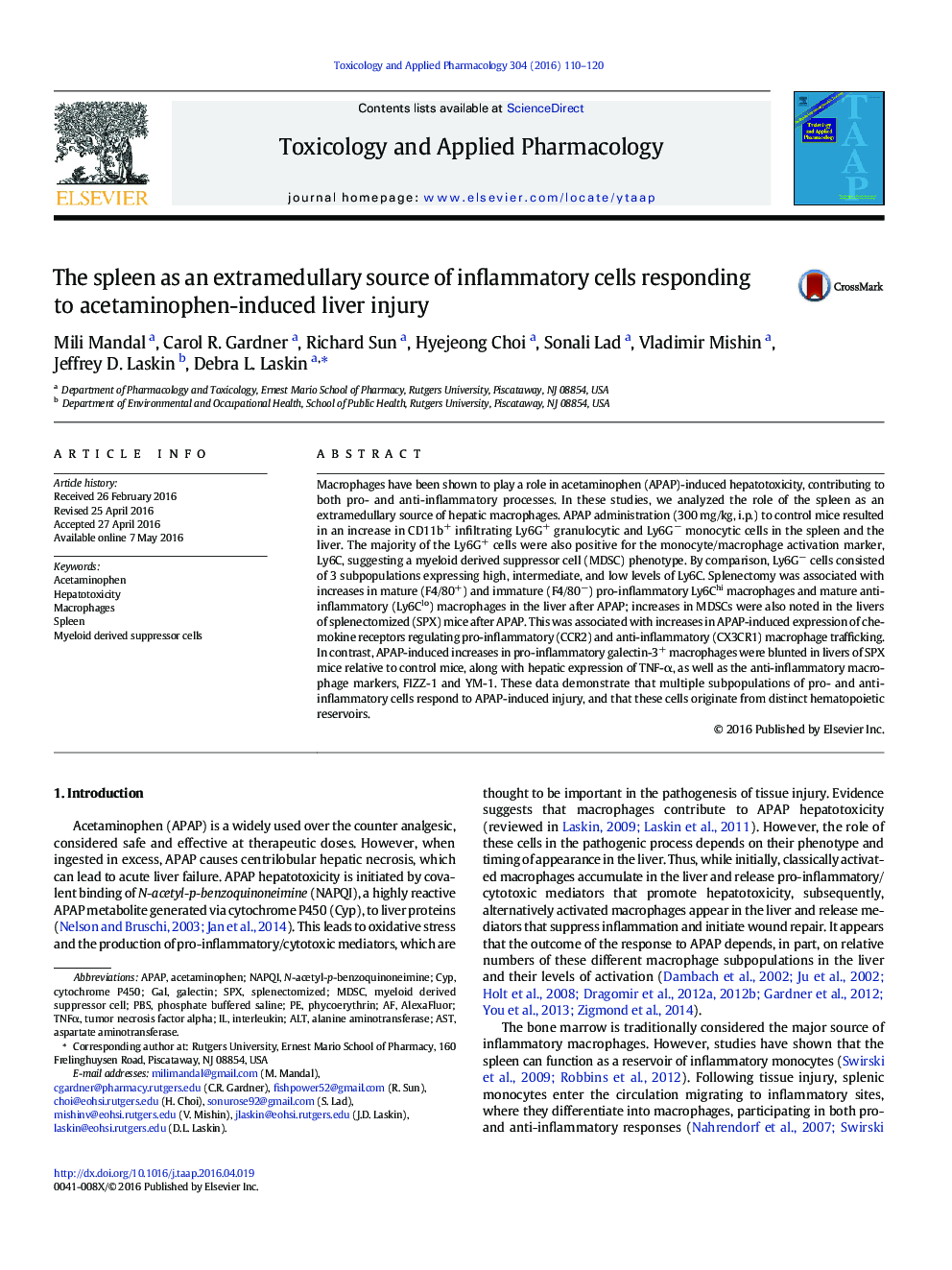| Article ID | Journal | Published Year | Pages | File Type |
|---|---|---|---|---|
| 2568030 | Toxicology and Applied Pharmacology | 2016 | 11 Pages |
•Multiple inflammatory cell subpopulations accumulate in the spleen and liver following acetaminophen (APAP) intoxication.•Splenectomy alters liver inflammatory cell populations responding to APAP.•Inflammatory cells accumulating in the liver in response to APAP originate from the spleen and the bone marrow.•Hepatotoxicity is reduced in splenectomized mice.
Macrophages have been shown to play a role in acetaminophen (APAP)-induced hepatotoxicity, contributing to both pro- and anti-inflammatory processes. In these studies, we analyzed the role of the spleen as an extramedullary source of hepatic macrophages. APAP administration (300 mg/kg, i.p.) to control mice resulted in an increase in CD11b+ infiltrating Ly6G+ granulocytic and Ly6G− monocytic cells in the spleen and the liver. The majority of the Ly6G+ cells were also positive for the monocyte/macrophage activation marker, Ly6C, suggesting a myeloid derived suppressor cell (MDSC) phenotype. By comparison, Ly6G− cells consisted of 3 subpopulations expressing high, intermediate, and low levels of Ly6C. Splenectomy was associated with increases in mature (F4/80+) and immature (F4/80−) pro-inflammatory Ly6Chi macrophages and mature anti-inflammatory (Ly6Clo) macrophages in the liver after APAP; increases in MDSCs were also noted in the livers of splenectomized (SPX) mice after APAP. This was associated with increases in APAP-induced expression of chemokine receptors regulating pro-inflammatory (CCR2) and anti-inflammatory (CX3CR1) macrophage trafficking. In contrast, APAP-induced increases in pro-inflammatory galectin-3+ macrophages were blunted in livers of SPX mice relative to control mice, along with hepatic expression of TNF-α, as well as the anti-inflammatory macrophage markers, FIZZ-1 and YM-1. These data demonstrate that multiple subpopulations of pro- and anti-inflammatory cells respond to APAP-induced injury, and that these cells originate from distinct hematopoietic reservoirs.
